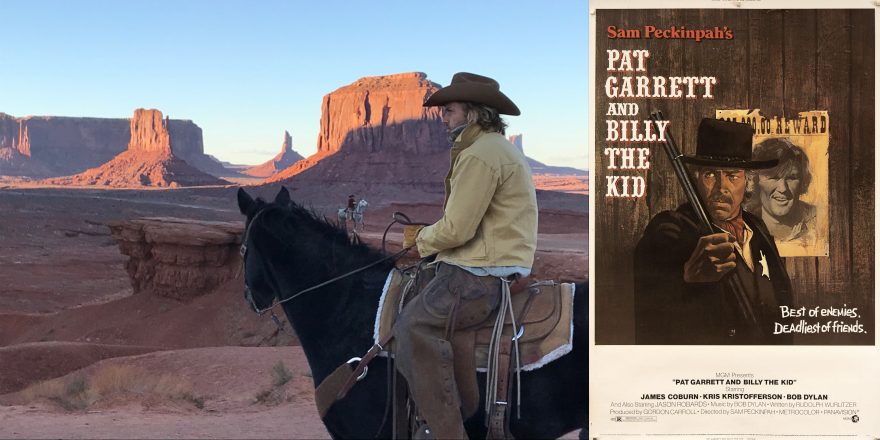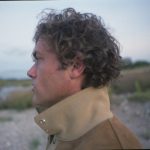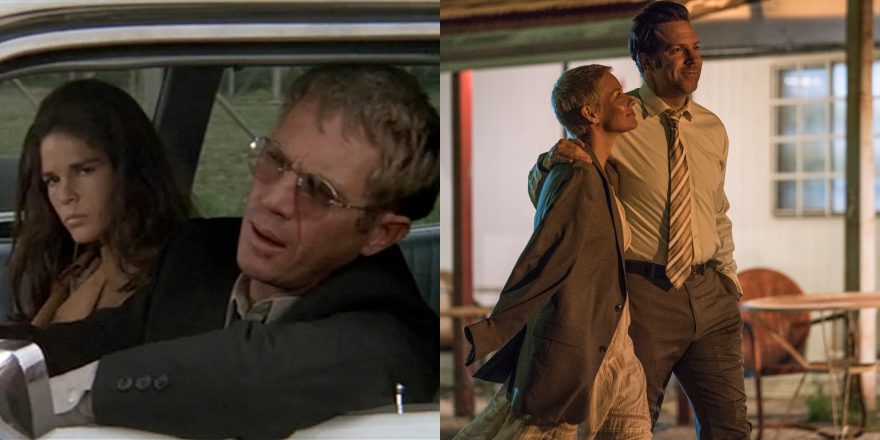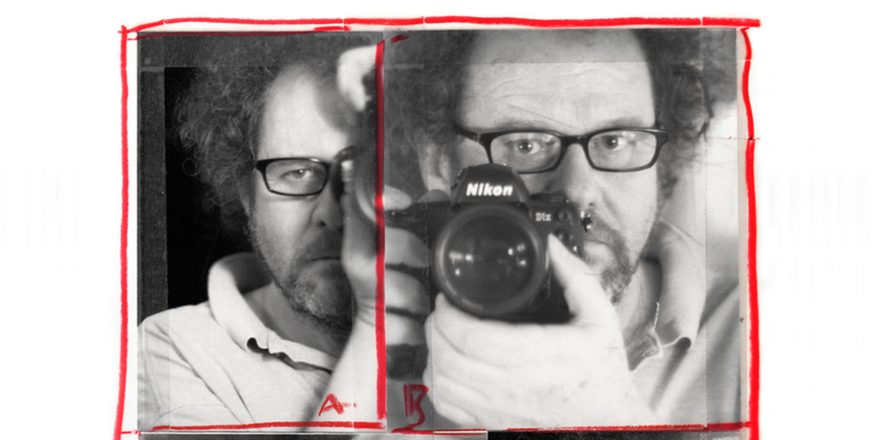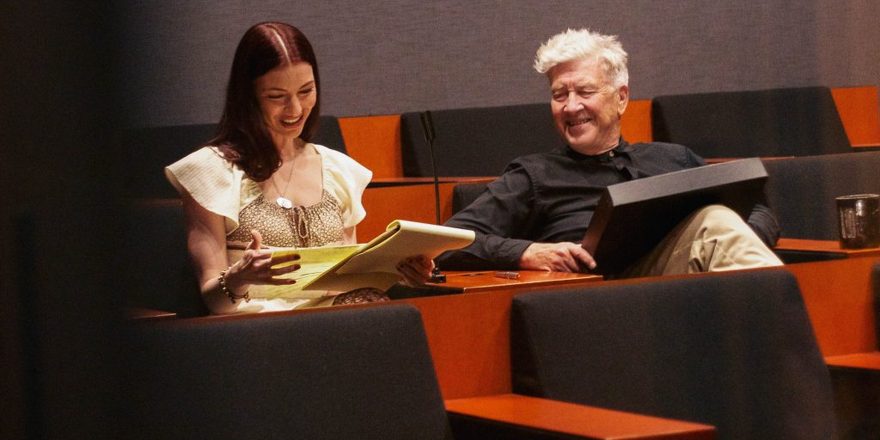Like many kids of my generation, I learned about Bob Dylan through Axl Rose. Now I’m sure there were a handful of others who had cooler parents than I did who were aware of Blowin’ in the Wind or Like a Rolling Stone, or some other early ’60s staples they overheard in their parents car, but that was not the case for me. My dad’s bronco was full of cassettes by Charlie Pride, Willie Nelson and Tex Ritter. His collection is something I’ve grown to appreciate as I’ve gotten older, but at the time I was deeply resentful of his distaste for the counterculture.
I was eight years old when Guns N’ Roses’ Use Your Illusion II came out; unfortunately, I was not allowed to listen to it due to the “Parental Advisory” sticker on the front of the CD at Camelot. I did, however, have a friend with a cool older brother who had an earring and wore jeans like Axl Rose, who had a copy of it. “Knocking on Heaven’s Door” seemed to be the soundtrack of that year, and will always remind me of the golden era of innocence and Starter jackets, Girbeaud jeans, Michael Jordan and the Dallas Cowboys. Pop culture seemed to have peaked for me somewhere around ’91 or ’92, but Axl Rose would plant the seed of what would become a lifelong obsession.
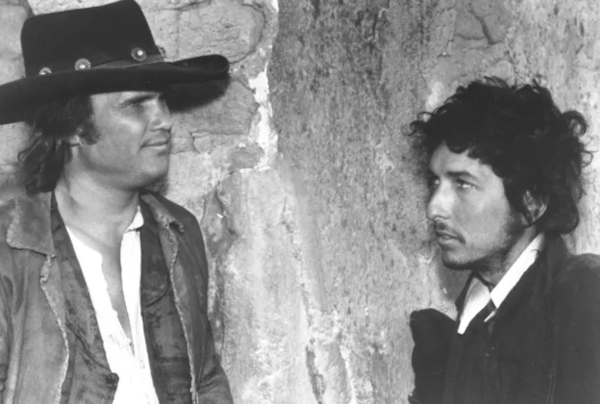
It was not until years later I connected the dots that the intro to the album’s opening track, “Civil War” was pulled from what would become my favorite movie of all time, and that “Knockin’ on Heaven’s Door” was pulled from what would become the most influential one.
In the same vein as Charlie Pride and Willie, the Westerns I grew up on seemed more traditional in nature, with cut and dry heroes. Rio Bravo, Lonesome Dove, Paint Your Wagon, The Searchers and Butch Cassidy and the Sundance Kid were the ones on repeat at my house. No question, I have an affinity for those films (I even named my most recent album after one of them), but it wasn’t until I discovered Sam Peckinpah and Pat Garrett and Billy the Kid that I felt like I had finally found a Western, and a world, that spoke to my off-center sensibilities.
By this point, I was already in deep with Dylan. Upon seeing No Direction Home for the first time during an interesting Yellow Tail and Adderall phase of my life, I became hopelessly obsessed with Bob’s entire body of work. And, in turn, extremely depressed. It was at 21, when I was in the middle of this “I’ll never do anything with my life” feeling after thoroughly being immersed in all things Dylan, that I realized “Knockin’ on Heaven’s Door” had been written specifically for a movie, so I, of course, watched that movie. Then watched it over and over again. Then listened to the soundtrack, for a decade.
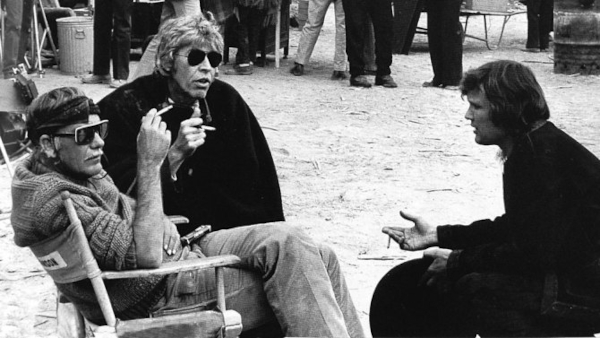
Looking back, after seeing the Director’s Cut of Pat Garrett and Billy the Kid and knowing the power struggles Peckinpah had with the studio, I can now admit the version that was originally released was not a great movie. It was a familiar story and at least an hour’s worth of Peckinpah’s twisted grit had been removed. But try telling that to a lost and idealistic 22-year-old trying to carve out a place for himself in the world. In retrospect, I fell in love with the movie more for what it represented than for what it was. It was the story of a complicated male friendship, as told by an iconoclast alcoholic auteur on his way out, starring the most charismatic poet of the past 50 years, with music composed by the most charismatic poet of all time. How could you not be sucked up into that holy trinity of rebellion? I was fascinated by the attitudes, I was fascinated by the self-destruction, and I was fascinated with the idea that an artist could have more than one medium. At a time when I was trying to run from a safe and traditional upbringing, I needed that combination of anti-establishment creativity to spark my own flame of curiosity and provide some courage to give it a go.
During this decade of immersing myself in Pat Garrett and Billy the Kid, I started to make films and commercials. I was living in California and doing my best to escape my Texan roots, but it seemed the longer I lived on the West Coast, the more I found myself becoming nostalgic and leaning in to all things Western. As my point of view became more refined as a filmmaker, I was left with an increasing amount of creative control. This was both a blessing and a curse for someone who had no technical film training, and it took time to find the most effective way to communicate my vision. This is where Peckinpah and Dylan re-entered my life in a significant way.

There has not been a film or a commercial or documentary that I’ve made that hasn’t somehow been influenced by Pat Garrett and Billy the Kid. Or a song I have written, for that matter. I learned how to tell stories in a very instinctive way, with words and feelings being at the core of what I was interested in. The idea of a “score” or the nuances of musical composition were very intimidating and foreign to me, but the idea of “songs” as a way to communicate an emotion or move a story along was something I could wrap my head around. I heard “Billy #7” by Bob Dylan before I had seen Pat Garrett, but could picture exactly what the world was, who these people were, and the aesthetic of how it was shot. I became fascinated by the idea of Bob watching a clip of the film and writing a song specific to a scene or narrative, and even more fascinated by the vision Sam Peckinpah had in how to use that song in the film. That marriage between director and musician became the primary driving factor in what I wanted to do with my life professionally.
The pictures of Sam Peckinpah sauntering around the set, half drunk with a bandana wrapped around his head, captured my imagination. As well as him crouched down smoking cigarettes with Kris Kristofferson, apparently having secret conversations, as if they were hiding something from the studio. There were legends of Kris flying a relatively unknown Willie Nelson down to the set in Durango, Mexico, so he could show him off to Bob Dylan. This all represented a particularly romantic version of all the sides of being an “anti-hero.” Is this what it meant to be counterculture? Is this what it meant to fight for your art? Ultimately, the film represented the “Death of the West,” which was something I had been grappling with for some time and became the north star in how I chose my subjects.
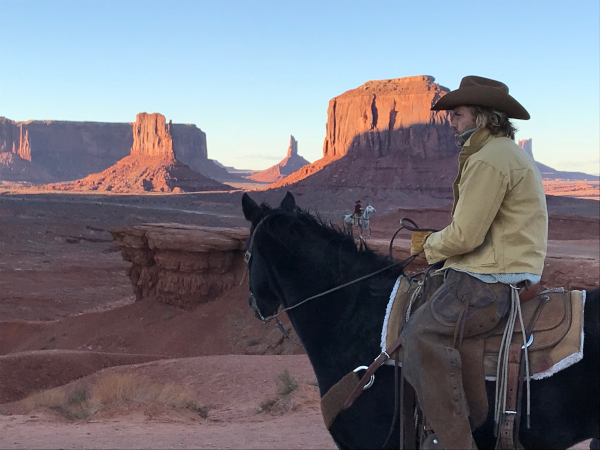
In pre-production for each film project, I would put together a playlist that set a tone for what I wanted to shoot, and would often have it playing behind camera as we filmed. I would send references to my composer or musicians during the edit, and all of them were some mashup of “Pat Garrett and Billy the Kid soundtrack meets …” For instance, I would say I want to create a song for a specific scene that has the spirt of “Billy #4,” but with the instrumentation of a Damien Jurado track. Or, the dusty tone of the “Cantina Theme,” but with a Bo Harwood piano melody. This could be very confusing and often contradictory to most composers, but it somehow made perfect sense to me and my two favorite musicians, Todd Hannigan and Jesse Woods. It became our secret language, and a shorthand in finding the magic while creating something totally singular to our specific mission.
This method is also how I stumbled into writing songs and becoming a musician in my own right. I was making a very personal short film about my friend Chris Malloy shortly after he had lost his father. Struggling to find the perfect song that lyrically captured the emotion the story deserved, I took a stab at writing one myself. It was called “Good Luck Kid” and was about the relationship of a grandfather and grandson. I wrote it with the intention of Todd Hannigan singing the words that I had written and never in my wildest dream thought that one day I would sing or record it. Three years later, I now have released my third full-length album, and my version of “Good Luck Kid” has almost a million streams on Spotify.
Maybe what I’m trying to say is, what I learned from Sam or Kris or Bob or Willie is that it’s possible to work outside of the system and make art that is honest if you don’t let the bastards get you down. Thanks, Axl.



